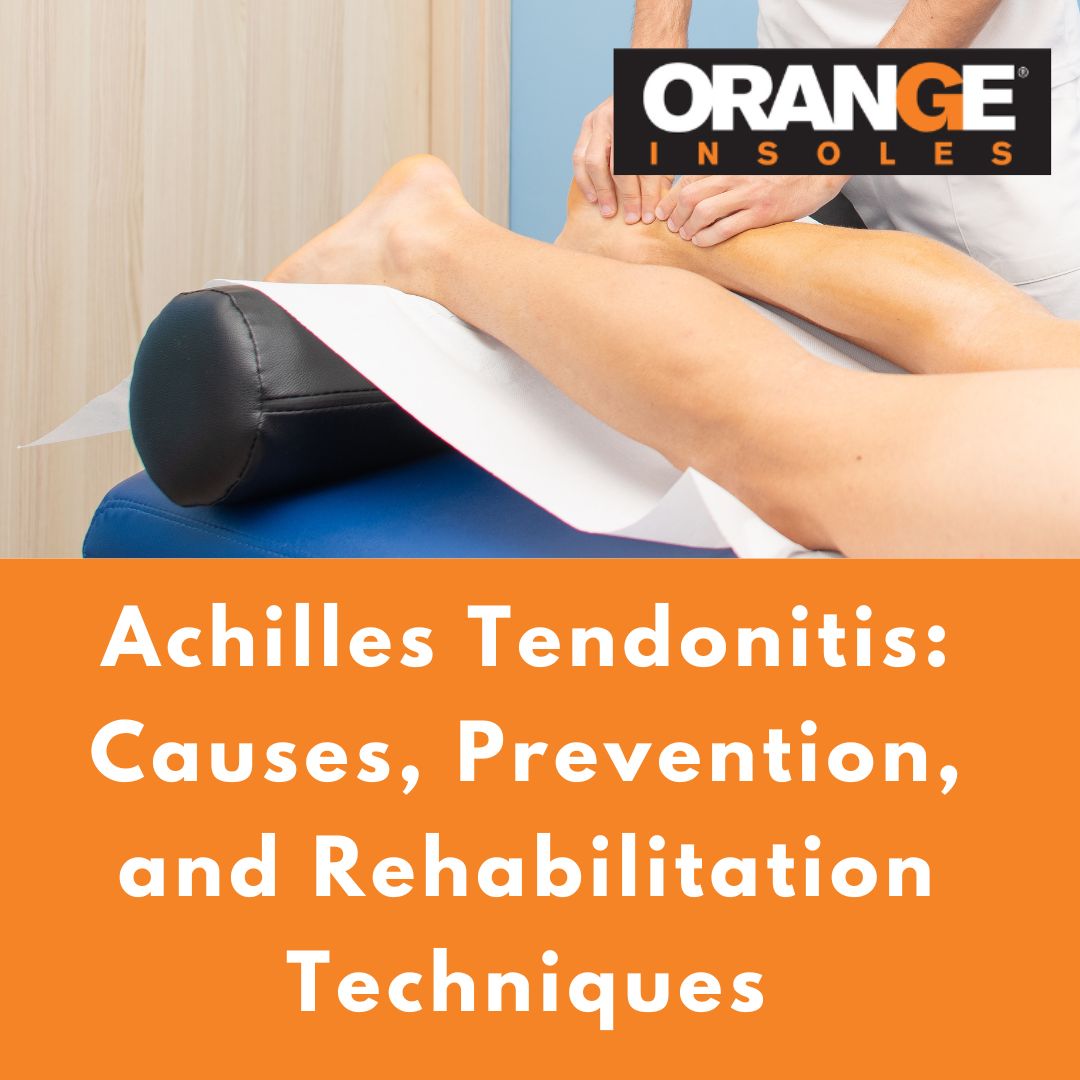While runners, basketball players, gymnasts, and other athletes might be familiar with achilles injuries or Achilles Tendonitis, anyone who is active or meets certain lifestyle factors should be aware of the basics of Achilles Tendonitis.
This injury, characterized by inflammation of the Achilles tendon, which is the large tendon that connects the calf muscles to the heel bone, can impact a wide range of people so let’s take a look at its causes, how to prevent, and how to treat it.
Causes of Achilles Tendonitis
If you’re experiencing pain and discomfort in the back of the lower leg near the heel that presents as a dull ache, a burning sensation or a sharp pain, you might have an achilles injury. This pain may vary in intensity and could increase during activity and may develop suddenly or gradually.
While achilles tendonitis can impact individuals of any age and activity level, there are certain groups who may be more prone to this injury.
- Athletes
- Middle age individuals
- Men
- Those with tight calf muscles
- Those with flat feet, high arches, overpronation or supination
If you meet any of this criteria you should be aware of the following common causes of this type of injury (there are more, this is just a quick glance at a few!):
Overuse or repetitive movements: Running, jumping, or dancing, can put excessive strain on the Achilles tendon and lead to inflammation over time
Sudden increase in activity: Abruptly starting any new workout routine or activity can put extra strain on this tendon and cause inflammation or injury
Tight calf muscles: Limited flexibility and tightness in the calf muscles can place additional stress on the Achilles tendon during physical activities.
Improper footwear or support: Poor support on the inside of a shoe or in the shoe’s foundation or upper can add to the stress on the foot –thus increasing calf stress and possibly causes small tears in the achilles tendon.
Obesity: Excess body weight can put extra strain on the Achilles tendon and increases the risk of Achilles Tendonitis.
Treatment of Achilles Tendonitis
While it’s important to consult with your doctor if you think you have an injury or serious condition, here are a few treatment options you can try if you’re experiencing pain associated with an achilles injury.
Rest: The best way to treat an injured achilles is to let it rest. Avoid activities that put excessive strain on the tendon like running or jumping but also stay off of it completely when possible.
The 3 S’s: Stretching, Strengthening and Supporting, have been found to be the simplest and most effective treatment for this injury.
- Stretching of the calf muscles and Achilles tendon can help eliminate or prevent many problems with the achilles tendon. Examples include calf stretches against a wall or using a towel or band for seated calf stretches.
- Strengthening of the calf muscles once the inflammation is gone, can help prevent further injury. These exercises may include heel drops on stairs or using a resistance band for calf raises.
- Supporting the foot with the proper shoes and insoles can prevent or eliminate the vast majority of increased stresses on the lower extremity. This may be a Birkenstock sandal with a broad base and contoured footbed that is also low to the ground and conforms to the foot. It may also be a shoe with an upper that wraps the foot and supports the arch and heel, thus limiting excessive pronation. One of the easiest and most effective solutions is to add a simple insole that provides a forgiving support for both the arch and heel. Orange Insoles can help with Achilles tendonitis and other causes of ankle pain.
Read more: Stretches to relieve Plantar Fasciitis
If your pain persists you’ll want to see a doctor or consider physical therapy but it’s important to NOT try and push through the pain, doing so could result in chronic pain or an even more serious injury.
Preventing Achilles Tendonitis
The best way to treat an injury is to avoid it in the first place. While this is easier said than done, here are some ways to prevent Achilles Tendonitis.
Ease into a new workout: Avoid sudden increases in intensity, duration, or frequency of your workouts or activities. Gradually build up your exercise routine, allowing your muscles and tendons to adapt and strengthen over time.
Warm up and cool down: Make sure to warm up with dynamic stretching, light aerobic exercise, or movements specific to your chosen activity before working out. You should also cool down with gentle stretching exercises afterward to help maintain flexibility and prevent muscle tightness.
Proper footwear and support: Supportive footwear can help mitigate conditions that can lead to achilles injuries like flat feet or high arches. An insole can provide additional support when needed to prevent the foot from shifting too far one way or another or putting too much strain on the calf muscles or tendons. Add an insole to any shoe to add a layer of protection and support.
Use proper form: Minimize stress on the Achilles tendon by practicing proper form when running, jumping, walking, or even working out.
Mostly, listen to your body and maintain healthy habits when working out, before, and after. Maintaining a healthy weight can help prevent injury and a proper stretching routine can help keep muscles warmed up and prevent strains or tears.

























































